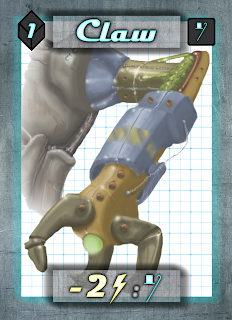Madness and Motu
I have been working more on the Citadel of Madness, and on Motu. I finished up another round of changes to the Citadel, and am ready to playtest it again. I also finished up a new version of Motu, and played it twice on Tuesday - once at work and once at the board game design guild.
Here are my notes from the BGDG:
The kickstarter for The Perfect Moment is coming up soon, and I am trying to figure out how to best assist Jason in getting the word out about it.
Here are my notes from the BGDG:
- Make it obvious that activate is bottom
- House, meeple and x are all the same.
- Taking over more islands should cost more shells
- Power up gather again!
- Swap gather to 2x and action to 1x shells.
- Ability to lock out cards by players
- Reword Marioso - to activate one card per turn max.
- Tie leaders and gods to strategy cards for legibility
- Combine worship & deify, and trade & sacrifice
- Use goods as cost for abilities
- Put worshippers in corner of blue card, and tuck that corner.
- Up player interaction
I will work on updating this stuff as I have time to. Perhaps I will even drop the game to a 36 card game from a 52 card game if I combine the strategies together.
I have also been dreaming up new games - one a hand management game (because on Ludology they said that "hand management" was a horrible term), and one is a microgame version of CoM. Perhaps I'll call that one "Madness".
The hand management game would have 18 cards with maps on one side and actions on the other. One player would be a murderous AI in charge of a space station, and the other is a human that is trying to survive until the rescue boat arrives.
One card is placed face down to act as the map, two are tucked in such a way that they uniquely identify the location of the player on the map, and the other 15 are the human player's hand.
Each turn the human player plays one card and discards one card. The game ends when the human player has only one card in his hand. Thus the game lasts 7 turns.
The cards that the human plays are all basically movement cards. They move him around the space station so that he can avoid the attacks of the AI.
Each turn the AI player shuffles all of the cards not in the action sequence or the human player's hand into a deck and then draws the top two. He plays one of them, adding it to the end of the action sequence, and then discards if he has more than two cards in his hand.
The action sequence is a chain of cards that the AI player builds to try and trap the human. Each card identifies multiple locations, and then an attack type. If the AI lines up two identical attack types (one on the last card on the action sequence, and one on the second to last card) then the human loses if he is in one of the locations specified on the second to last card.
Thus the human can see what the AI is planning one turn out, so he can avoid the AI.



Comments
Post a Comment